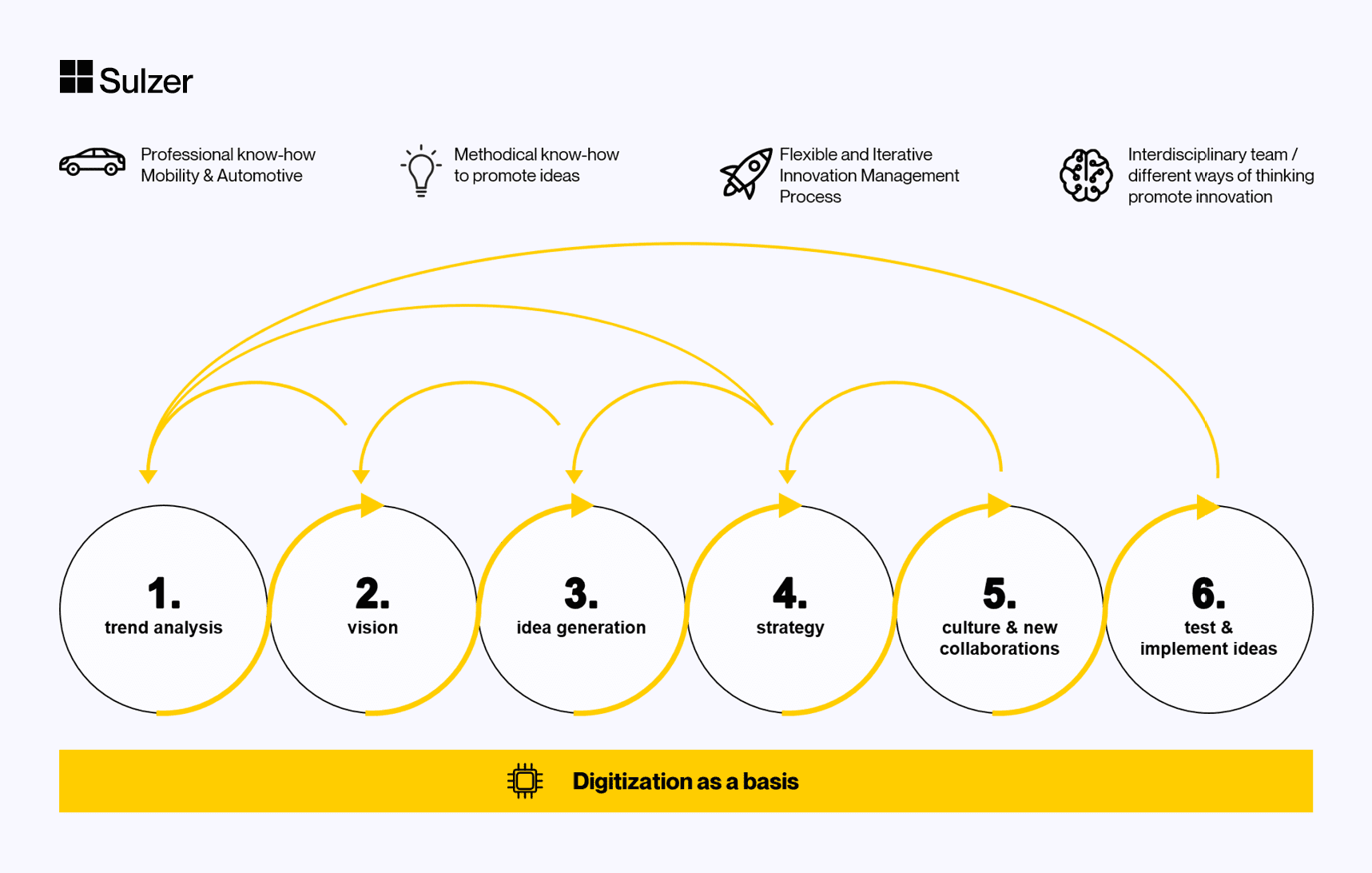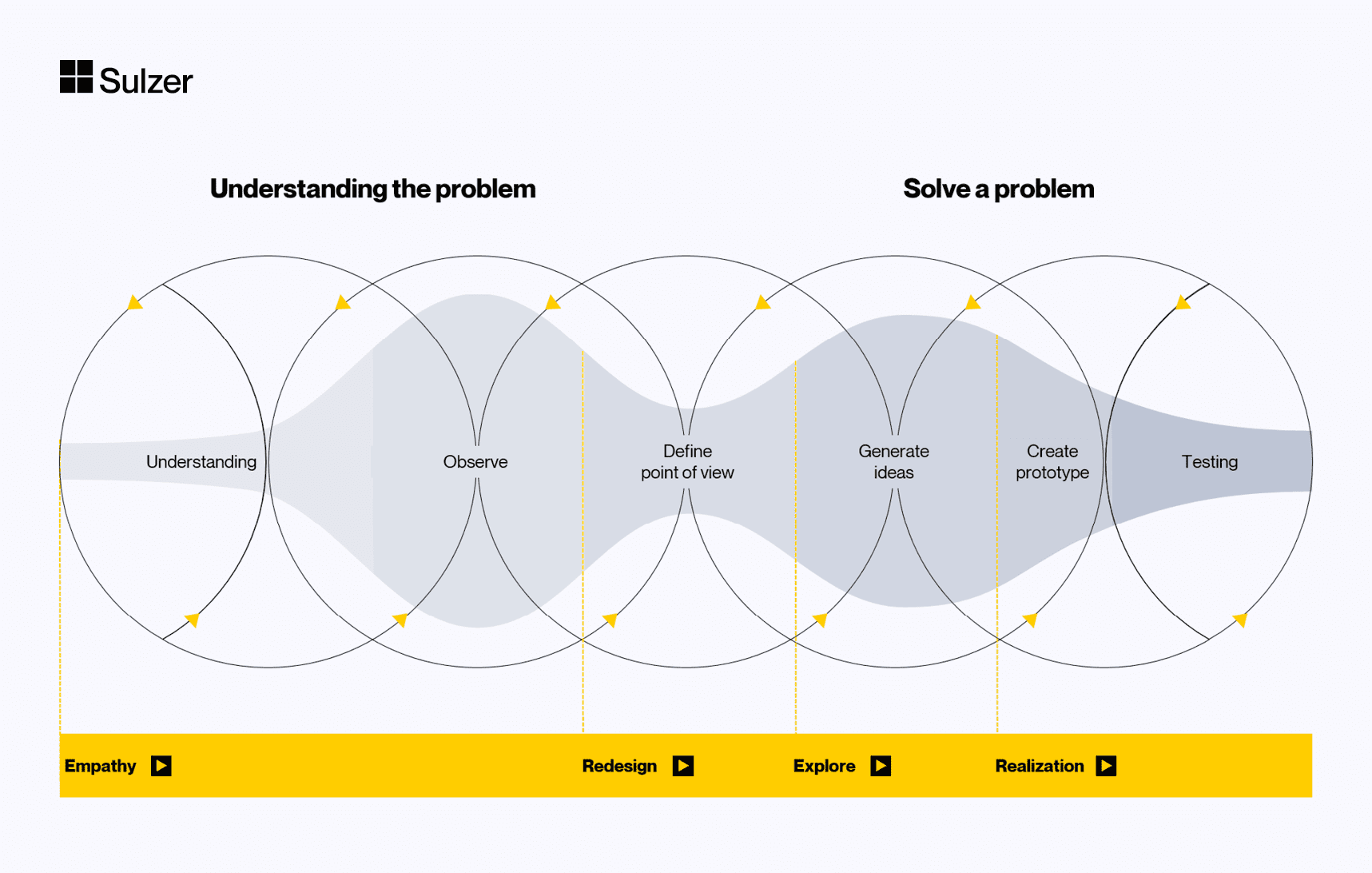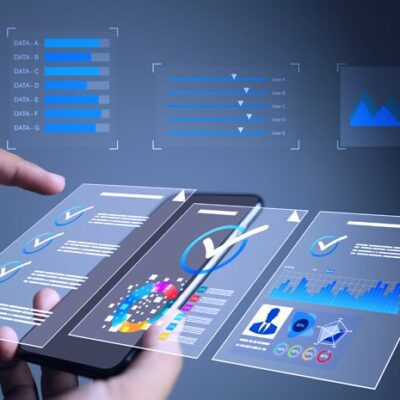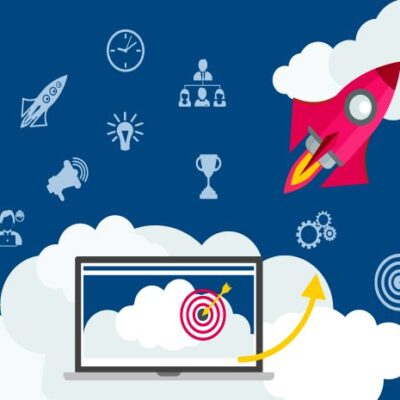Over 100 years ago, Henry Ford turned the manufacturing industry upside down by standardizing production processes. From then on, automobiles could be produced more efficiently and at lower cost thanks to this process innovation. They became affordable for the general population.
Today, the industry is once again undergoing a transformation process, driven by megatrends such as urbanization, climate change and digitization. Product innovations in the field of drive technologies, such as electric or hydrogen drives, are increasingly establishing themselves on the market and heralding the post-fossil age.
New business model innovations on the advance
New mobility solutions are needed that make individual mobility more efficient – without restricting it. User-centered approaches today serve the mobility needs of the individual. Business model innovations in the form of subscription and pay-per-use models are on the rise, providing the vehicle via a mobile platform.
The market is showing an unprecedented dynamism that requires all stakeholders to generate new ideas in shorter cycles. The systematic planning, management and control of innovations in companies is essential to remain competitive in the future.
What happens in innovation management?
Innovation management is dedicated to precisely these tasks: In addition to the development of ideas, it also includes their exploitation or implementation in economically successful products, services, (manufacturing) processes and organizational structures. While product innovations are usually aimed at better satisfying customer needs, process innovations are more geared towards improving the effectiveness and efficiency of internal processes.
The automobile and digitalization
Increasing digitization is leading to ever shorter life cycles for products and services. Innovation management and the associated generation of ideas are of central importance for gaining a competitive advantage. Vehicle lifecycles are being supplemented by software updates to incorporate new innovative digital features.
Tesla has demonstrated how such an “extended” life cycle can awaken sustained desire. In addition to customer loyalty, this also opens up further monetary income opportunities: New digital sales channels are emerging and customer touchpoints are being continuously expanded.
New thinking - spreading of Shared Economy in B2B and B2A environment
Digitalization also means that not only vehicles are networked with a mobile application, but also that road users communicate with each other in real time. As a result, various disciplines – from urban planning to IT architecture – are coming together with the aim of taking a holistic view of mobility. This also means new thinking in terms of collaboration and knowledge exchange.
“Shared Economy” takes on a completely new meaning and can be increasingly observed in the B2B and B2A environment. Sharing can be rethought in many dimensions – temporally, spatially and across borders.
Further develop models, generate and evaluate new ideas - in an interdisciplinary team
Innovation management, trend analysis and understanding the continuous change in customer needs are fundamental to further develop existing models – and to generate and evaluate new ideas.
Sulzer recognized this development at an early stage and built up an interdisciplinary team which, in addition to various professional competencies and thought patterns, a holistic understanding of trends, has a broad methodological knowledge and proven experience in the application of creative methods. With its know-how, the team significantly supports the development of innovative ideas.
A continuous exchange of ideas is promoted internally as well as with partners and customers through corresponding fields of competence. In this way, we bring to bear our comprehensive expertise in the digitization of a wide variety of business processes and models, especially in the automotive and mobility sectors.
Innovation management at Sulzer: an interlocking, individually designed process

The core process is divided into six steps:
- Trend analysis: Identifying the most important trends and drivers that influence system mobility.
- Vision: Definition and elaboration of the category (process, product or business model innovation, in order to have an appropriate framework – both methodically and for the idea generation process).
- Idea generation: Based on the analysis and by using appropriate methods, ideas should be systematically developed that fit into the previously defined framework. The focus is on an agile approach that is particularly suitable in the digital environment. “Out of the Box” thinking is also possible here.
- Strategy: Concrete measures are developed from the previous steps, which then lead to a holistic strategy. Concrete projects are defined and a roadmap for all initiatives and projects is created.
- Culture and new collaborations: The analysis of needs, towards the so-called “social collaboration”, between different actors, both in the B2B, B2C or B2A environment. New forms of collaboration and exchange are emerging. For this purpose, it is often also necessary to adapt one’s own corporate culture.
- Testing and implementing ideas: In this step, the feasibility of the developed ideas is tested and evaluated whether there is a market demand for the idea.
The basis for this is IT and the digitization of various processes as well as the targeted promotion of digital business models. This is supported by an interdisciplinary team, which brings different thought patterns into the process to obtain a holistic view. Innovation management is elementary due to the rapid change in market requirements and the often abrupt adjustment of the general conditions.
Integrated into an individual, agile process, the generation of ideas is thus consistently promoted and possible innovations are already tested during the process. The procedure is not linear – so there is always the possibility to go back one or more steps to get the best possible result.
Sulzer InnovationLab - a "space for ideas"
With the Sulzer InnovationLab, we have created a “space for ideas” to help shape the mobility of the future. Here, it is possible to develop ideas in teams with customers and partners – across positions, departments, and hierarchies. Open spaces, a toolbox with creativity techniques, consulting methods, and experienced facilitators promote innovation empowerment.
The already common creative methods such as brainstorming, mind mapping or the World Café are joined by newer innovation formats such as Design Thinking and the Sulzer Design Sprint. These iterative techniques support product, process and business model development as well as the testing of new ideas.
Design Thinking: a theoretical overview
The basic assumption of Design Thinking is that innovation results from the combination of the factors human (desirability), technology (feasibility) and economy (profitability). The Design Thinking approach is “people-centered”, which is also reflected in the user-centered approach of new mobility solutions.
The first step is to observe, identify and understand the needs of the target group. The insights gained from this are the starting point for the actual generation of ideas. By creating and testing prototypes at an early stage, ideas are quickly implemented and evaluated. The repetition and flexible handling of the various steps enables an ever better understanding of problems and solutions.
Thoughts and knowledge should be made visible to everyone – using tools and aids such as mind maps and clustering. Facilitators help to implement the process as efficiently and fluently as possible.
Our goals in Design Thinking:
- Problem solving and development of new ideas
- Use innovation potential dynamically and iteratively
- Focus on customers and end users and their needs
- Process step sequence – will be adjusted according to requirements
Our approach to Design Thinking:
- Communicate, observe, gather information (interviews), tap sources that provide information about the project and understanding
- Summarize information and put it into a “picture” of the customer – create Persona and Empathy Map
- Generate new solution ideas with the knowledge gained
- Create prototypes and use materials, role plays and process images to make the prototypes tangible
- Testing, finding out and optimizing adjustments
Best practice example: Design Thinking with many mobility stakeholders
Exemplary for such an implementation of the Design Thinking process is our involvement in the optimization of the application process for suppliers of a large mobility stakeholder.
Understand and observe
Together, we went through the stages of a design process: Starting with the understanding phase, which is about understanding the end user and his needs. In this specific case, service providers who apply to our global mobility company as suppliers and want to be included in the database in the next step.
However, since this process also involved handling for internal purposes, such as documents, certificates or risk assessments, we established an understanding of how the specialist departments handle this application and the entire internal process. To this end, we conducted interviews with a total of 250 end users of the database over the first four weeks, observed their working methods and thus had stumbling blocks and potential for improvement demonstrated to us directly on site and on the program.

Define point of view and generate ideas
In order to be able to “define the point of view” next, we first created – on the basis of the interviews and the observation phase – various so-called personas and empathy maps. Both are suitable methods to look at the problems (Pains) and improvement potentials (Gains) of the process or application from the perspective of the end user.
Customer Journey Maps can also be a good option, especially for new mobility solutions, in order to derive the barriers and resulting additional needs. These help to understand what the end user does and when, which decisions or inputs he has to make and how he reaches his final destination – here the inclusion in the database.
This change of perspective in turn enables a different way of looking at things, from which new ideas and approaches to the problem can be developed. In this case, we were able to argue from the perspective of the person in question and put ourselves in the best possible position in the end user’s mind.
- When is user XY angry about the process/application?
- When is he positively surprised?
- Where would he see chances or weaknesses of the system?
- What would simplify the handling of the system?
- What would the user want in addition?
Exactly these questions are asked in the idea generation phase, whereby a correct answer is not required. Instead, attention is paid to ensuring that as many suggestions as possible are considered.
Creating and testing a prototype
After we had found many suggestions for improvement, completely new approaches and various technical adjustment requests for the supplier application process in a one-day workshop, we entered the realization phase of the project, i.e. the actual implementation. Based on our suggestions and findings collected so far, we created first visual representations (mockups, user interfaces, various designs etc.) and tested these prototypes with the end users. Subsequently, and based on the user feedback, we did further rounds to arrive at a first Minimum Viable Product (MVP), which was subsequently improved, and finally implemented and developed.
This ensures that the final user of a new application or product is involved, provides feedback and can react directly to this feedback. By going through the individual cycles and steps (several times) and through the continuous feedback, iteration can take place until the customer, end user or user is completely satisfied. In our best practice with the new, revised application process for suppliers. A continuous improvement is thus created by a constantly adapting, reflective process.
Shaping future mobility with vision and innovation
We see ourselves as an innovation partner and have recognized the changes and megatrends early on. The transformation process in mobility has already begun and is accelerated by various megatrends. The corona pandemic has shown how existing structures can change within a very short period of time and how companies have to react quickly. Innovations and the right timing are crucial in this respect. We look forward to helping shape the mobility of the 21st century together with our partners and customers.
How can current trends be transformed into a sustainable mobility ecosystem?
Innovation and the right timing are crucial. With extensive software expertise and a feel for megatrends, we support our customers in making the diverse means of transportation available sustainably and intuitively.
Do you need mobility solutions for your business?
Our experts are happy to advise you!



